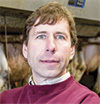The University of Minnesota Extension, in conjunction with the University of Wisconsin Extension, is requesting robot users to share their knowledge via our short (10 to 15 minute) survey. Please complete the survey by June 1.
Other robot resources
We also invite you to join a new virtual peer-to-peer community called ComMoonity – Robotic Milking, where farmers can share questions, answers and experiences to improve your robots’ performance.
We believe farmers will continue to install robots because of the tightening labor supply and increasing farm wages. However, given the price and market volatility that we have experienced, making major investments like robots requires strategic planning and careful analysis.
The University of Minnesota Extension has also developed resources and tools to help figure out the net impact of robotic milking on your farm. ![]()
Jim Salfer is a dairy extension educator with the University of Minnesota.







